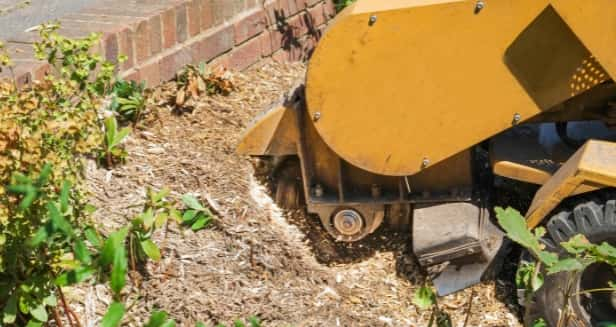Proper pruning is essential for the health, appearance, and long-term success of trees, particularly young trees. When trees are correctly trained from an early age, they are more likely to grow strong, stable, and aesthetically pleasing. Additionally, early pruning helps prevent future issues, such as weak or poorly positioned branches, which can pose risks to the tree and surrounding structures.
In this article, we’ll explain why and how to properly prune young trees and the benefits of doing so.
Why is Pruning Young Trees Important?
Pruning young trees is an investment in their future health and growth. By shaping the tree from an early stage, you can ensure that it develops a strong, stable structure that will allow it to thrive in the long term. Here are some key reasons why pruning young trees is so important:
1. Encourages Strong Structure
One of the primary purposes of pruning young trees is to establish a strong and healthy framework. This allows the tree to grow in the right direction, with a well-spaced arrangement of branches. By removing weak, competing, or crossing branches early, the tree will focus its energy on growing a robust trunk and well-positioned limbs.
2. Reduces the Need for Future Pruning
If left unchecked, poorly trained trees may require more aggressive pruning later in life. By addressing issues early, you can minimise the need for extensive cuts as the tree matures, promoting overall health and reducing stress on the tree.
3. Improves Airflow and Sunlight Penetration
Proper pruning improves the airflow around the tree and allows sunlight to reach the inner branches. This helps reduce the likelihood of diseases, such as mould and mildew, and promotes healthy leaf and root growth.
4. Aesthetic Appeal
Pruning helps shape the tree in a way that enhances its appearance. With proper care, young trees can develop into a beautifully balanced, symmetrical shape, which adds value to your garden or landscape.
When Should You Start Pruning Young Trees?
The best time to begin pruning young trees is when they are still saplings or in their first few years of growth. Pruning is typically done during the dormant season, either in late autumn or early winter, when the tree is not actively growing. This minimises stress on the tree and promotes healing before new growth begins in the spring.
Proper Pruning Techniques for Young Trees
Pruning young trees is an art that requires a balance between removing unnecessary branches and leaving enough to encourage healthy growth. Here are some key techniques to follow when training young trees:
1. Establish the Central Leader
For many tree species, the central leader (the main trunk) should be the tallest and most prominent stem. Early pruning should focus on promoting the growth of the central leader and removing any competing stems or branches that may weaken the tree’s structure. By encouraging a strong, straight trunk, you ensure the tree’s long-term stability.
2. Remove Dead or Diseased Wood
As with all pruning, it’s essential to remove any dead, damaged, or diseased branches. These branches not only detract from the tree’s appearance but can also serve as entry points for pests and diseases. Removing unhealthy growth early helps the tree focus its energy on healthy development.
3. Thin Out Crowded Branches
When young trees grow too many branches in close proximity, they can become crowded and start competing for sunlight and nutrients. Pruning away excess branches and ensuring that the remaining ones are spaced apart improves airflow and sunlight penetration, both of which are crucial for a healthy tree.
4. Focus on the Shape
Pruning is also about shaping the tree to ensure a balanced and symmetrical appearance. As the tree grows, continue to remove branches that disrupt its natural shape. Avoid removing more than 20-30% of the tree’s canopy at any one time, as over-pruning can cause stress and leave the tree vulnerable to diseases.
5. Don’t Rush
Young trees should be pruned gradually. It’s important not to be too aggressive in the first few years, as this can stunt growth and hinder the tree’s development. Allow the tree time to grow and adapt to each pruning session before making further adjustments.
When to Call a Professional Tree Surgeon
While pruning young trees can be a simple task for experienced gardeners, it’s always best to call in a professional tree surgeon if you’re unsure. A certified tree surgeon has the expertise and knowledge to assess your tree’s needs and carry out pruning with precision and care. They can help you avoid making mistakes that could negatively affect the tree’s health or structure.
Professional tree surgeons also have the right tools to safely prune trees at different heights and in difficult-to-reach areas. They can also offer advice on how to maintain the tree’s health over the years and prevent future problems.
Conclusion
Proper pruning techniques can make all the difference in the life of your young trees. By taking the time to train your trees early, you help them develop into strong, healthy, and well-formed specimens that will thrive for years to come. If you’re unsure about pruning or need professional help, don’t hesitate to contact us. At Ware Tree Surgeons, we offer expert tree surgery services to ensure your trees grow safely and beautifully.
If you’re interested in learning more or would like to schedule a consultation, reach out to us today!
Call us on: 01992 932 299
Click here to find out more about Ware Tree Surgeons
Click here to complete our contact form and see how we can help with your tree care needs.

